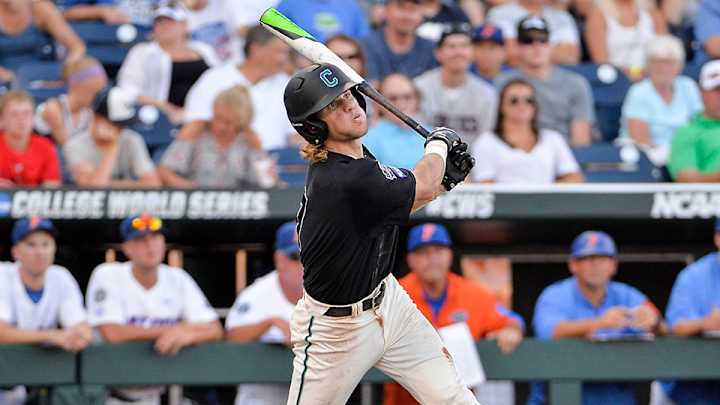College World Series uses instant replay for first time

Read about the latest sports tech news, innovations, ideas and products that impact players, fans and the sports industry overall at SportTechie.com.
Since the introduction of the instant replay, the ability of an official to change the momentum and outcome of any sporting event has never carried more weight. Hundreds of game-shifting plays have been resolved in the booth during nail-biting moments.
College sports are slowly shifting towards the use of the instant replay and the NCAA took a big step yesterday in the Men’s College World Series.
In the game between Coastal Carolina and Florida, officials broke out instant replay capabilities in a World Series game for the first time in history after a third inning RBI double by Coastal Carolina third baseman, Zach Remillard, was originally ruled was originally ruled foul. Although this was the first time the technology was used in Omaha, replay reviews have been available in the CWS since 2012.
In 2015, during the Super Regional between Louisville and Cal State Fullerton, instant replay got its first nod in college baseball’s postseason games.
• Get the latest sports tech news in your inbox!
“This is the first time we’ve used instant replay in the NCAA Men’s College World Series since it’s been available. At the end of the day, the goal is to get the call right on the field. ... The instant replay officials made the call that they felt was the right one to be fair to both teams involved,” said Randy L. Buhr, director of NCAA championships and alliances.
The instant replay experimental rules call for reviewable plays when:
- Deciding if a batted ball is fair or foul (must first touch the ground beyond the first or third baseman)
- Deciding if a batted ball is either a ground-rule double or a home run
- Catch or no catch in the outfield or foul territory. Not in the infield unless it results in a third out; or a catch at any time with a batter only
- Spectator-interference, only if it affects items 1, 2 or 3 above
Sports across all leagues are adopting replay technology and altering its regulations to better fit specific sporting structures. In May 2016, the NFL decided it was time to put more in the hands of this technology when it altered and added new rules to its instant replay technology.
The NFL’s updated instant replay rules are as follows:
- Plays involving possession.
- Plays involving touching of either the ball or the ground.
- Plays governed by the goal line.
- Plays governed by the boundary lines.
- Plays governed by the line of scrimmage.
- Plays governed by the line to gain.
- Number of players on the field at the snap.
- Game administration: penalty enforcement, proper down, spot of a foul, status of game clock
FIFA has also broken into the world of instant replays through its inclusion of video assistant referees (VARs) in six competitions around the globe. The VARs will work hand-in-hand with field referees and will look to assist and determine results in the outcome of goals, penalty discussions, red card incidents and mistaken identity during the upcoming season.
After the referees go to the VARs, the video is reviewed and detailed information is relayed back to the referees. If the referee needs to see more, he can go to video monitors on the side of the pitch before making his final ruling, or he can choose to accept the VARs judgments and rule the play using those details.
As the world of sports increasingly turn to instant replay, college baseball plans to have all of its bases covered. High-towering homers, bang-bang plays at the plate and spectacular diving catches will be monitored in hopes of bringing America’s pastime into the modern age.
